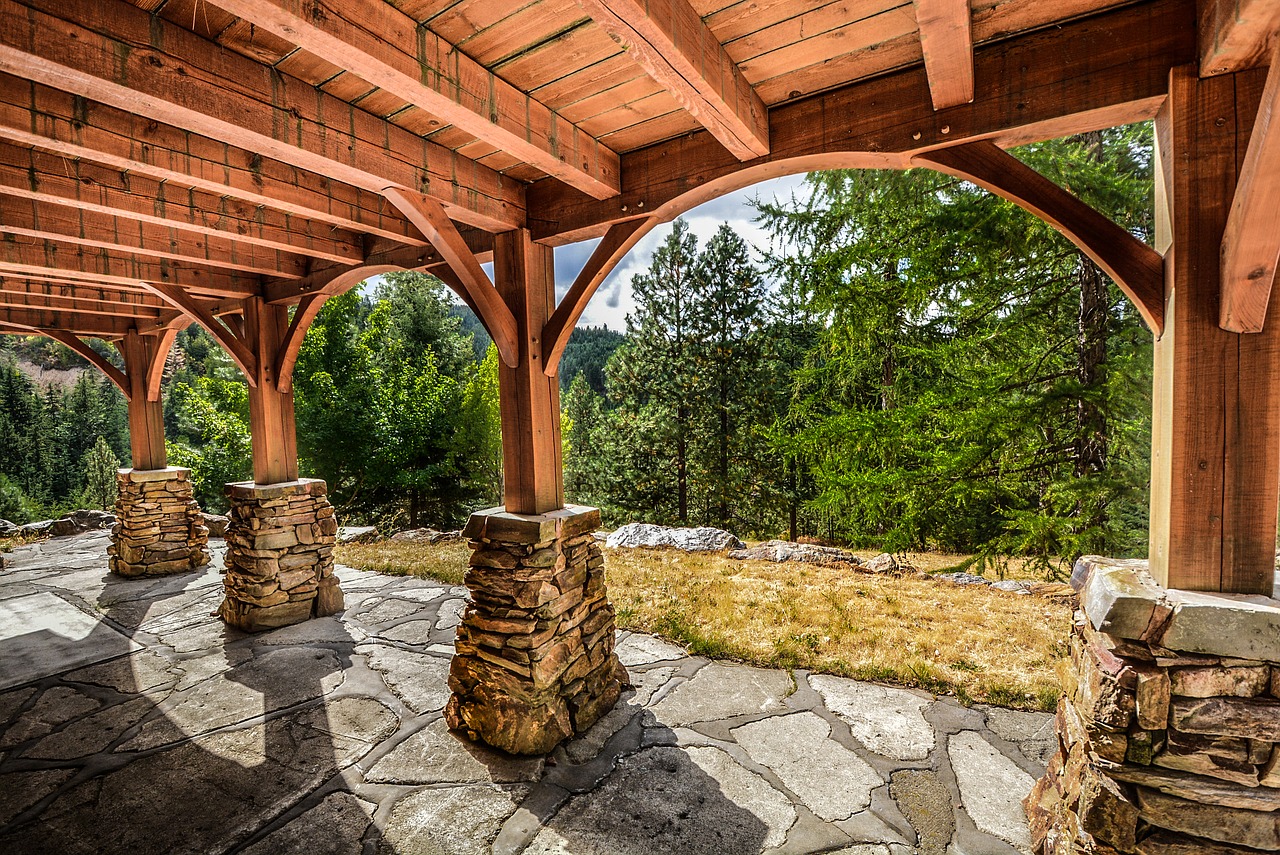What is pressure treated lumber?
Pressure treated (PT) lumber is wood that has been infused with chemical preservatives to protect the wood from rot and insects. The wood is placed in a depressurized holding tank that removes the air and replaces it with a preservative.
This process is the best way to avoid harmful rot and insects but does not prevent weathering and corrosion.
When working with pressure treated wood, we suggest you wear gloves, eye protection and a dust mask (NIOSH N95) when handling wood.
Due to preservatives in pressure treated wood, it should never be burned. Sawdust and scraps should be disposed of in a landfill.
Keep your outdoor structures beautiful for years by building with pressure treated wood.
In addition to the preservative treatment that enables wood to last a long time, it has all the environmental and other advantages usually associated with the wood itself. Its source is a renewable and quickly replenished resource grown on managed timberlands, requiring less energy to produce than alternative building materials.
There are many types of treated lumber.
Treated wood has outstanding environmental qualities with regard to sustainability, carbon footprint, and low-energy production as confirmed in its life-cycle assessment.
The three main families of treated lumber used in construction.
Borate, Alkaline Copper Quat (ACQ) and other rot-resistant treatments, and non-combustible (Non-Com). See the complete list of Treated Lumber.
How to cut treated lumber.
As a rule, treated lumber should not be cut other than to length (excepting treated plywoods). This is for several reasons:
- A ripping cut will probably expose a portion of the board either not fully treated, or only partially so – this generally voids any warranty extended
- A ripping cut may accelerate/prompt warpage and other undesirable effects
- Containment of the dust and scraps may be problematic
Always follow a manufacturer’s recommendations!
Can you paint pressure treated lumber?
Pressure treated (PT) lumber takes months to shrink and re-contract on and off so the paint will crack and not adhere correctly. Painting pressure-treated wood comes with complications caused by the very same treatment that allows the material to last outdoors.
How do they pressure treat wood?
To produce pressure-treated wood, the milled lumber (typically pine or cedar) is saturated with chemical preservatives. These chemicals minimize the wood’s natural vulnerability to insects and rot.
To create pressure-treated lumber, untreated wood is placed into a large treating cylinder. A vacuum is applied to remove most of the air from both the cylinder and the cells of the wood. A preservative solution is then pumped into the cylinder and the created pressure forces the preservative solution into the empty wood cells.
Do I need to use special fasteners for pressure treated lumber?
Yes, fasteners such as nails, screws, and bolts used on treated wood needs to be hot-dipped zinc-coated galvanized steel, stainless steel, silicon bronze or copper. Check the label on the fasteners to see if they will work with treated wood.
Where can I use pressure treated lumber?
Wood for any outdoor project should be pressure-treated, while wood for indoor projects should not be pressure treated.
The chemicals used to pressure treat wood aren’t safe for humans, this is why non-pressure treated wood is still required for use indoors, and why builders recommended that you only use pressure treated lumber for your outdoor projects like decks, pergolas, etc.
Is treated wood as strong as regular wood?
Pressure treated lumber is no stronger than untreated lumber. The difference between the two is that pressure treated lumber will resist the elements better than untreated due to chemical preservatives added, and so will maintain its integrity in conditions that would cause normal wood to rot.
Pressure treated lumber prices.
You’ll find value and selection on quality treated lumber at Front Range Lumber’s locations in Lakewood and Fort Lupton Colorado.
Lumber is a commodity with prices fluctuating due to market conditions. We stock a large selection of different types of treated lumber in a wide range of sizes at very competitive prices for the top quality we sell.
Pressure treated lumber grades.
Most treated lumber does not come in different grades, the exception being plywood, which will come in both ACX and CDX grades. Virtually all treated lumber is considered for construction only – those grades do not take appearance into consideration. In most cases (except deck framing), the treated wood used will be covered by trim, drywall, paint, etc.
Front Range Lumber does have some of its own wood treated, translating into a better quality than widely available. Based on appearance and shrinkage issues, Front Range Lumber does not recommend the use of treated lumber for decking boards (use for framing only).
Weyerhaeuser Treater Series™ Lumber – treated lumber that starts straight and stays straight.
Weyerhaeuser’s Treater Series lumber is graded by a patented, computerized system to ensure that every piece starts straight and stays straight. For more information go to our Treated Lumber page.
Read more information on treated lumber.
- Use/retention charts
- Treated lumber size chart, and grades
- Treated lumber installation tips
- Health and safety concerns when working with pressure treated lumber products
Pressure Treated Lumber Resources:
APA – The Engineered Wood Association: www.apawood.org
Western Wood Preservers Institute: www.wwpinstitute.org





